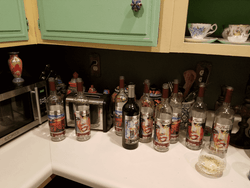This Valentine’s Day you’re likely either preparing a romantic date, a get-together with friends, or enjoying the day solo. Whatever the circumstances may be, you may find yourself picking up a bottle of wine and chocolates to celebrate. Together with chocolate, these two aphrodisiacs are almost a mandatory pick for expressing love. But why? And how did their origins become intertwined with our modern-day romance and celebration?
The History of Valentine’s Day
The history of Valentine’s Day dates back to the middle-ages. Although the versions of the narrative are different, the story’s theme is the same. Valentine’s Day was named after St.Valentine, a patron saint of love, who was executed in AD 269. Apparently because, according to the legend, he refused to renounce his beliefs.
The day was initially celebrated as a religious feast day for the Catholics. Though it later became secular, it still influenced the modern definition of the holiday. In the 18th century, brides were given chocolates, flowers, and greeting cards by their grooms on this particular occasion. And, later in the 19th century, Valentine’s Day became an established holiday for lovers.
A Favorite Duo for Lovers
Whatever the history behind Valentine’s Day is, today it has turned into a holiday celebrated across the globe. Though many give flowers, chocolates, and cards, the most popular way of sharing love with your partner is through a delicious meal complemented by a nice glass of wine.
Wine is an aphrodisiac, and pairing it with chocolate makes the whole experience even more romantic. Because wine is a social drink, having a glass of your favorite varietal is perfect for a large group or a couple on Valentine’s Day.
Pairing Wine and Chocolate
Standard pairing rules with chocolate and wine on Valentine’s Day rely on the vanilla and cream aspects of the wine. Looking back at the chocolate and wine history can help you in your quest to find the perfect pair.
For example, it is essential to choose a slightly more aromatic white varietal that adds complexity. Make sure it doesn’t overwhelm your palate as you will be tasting lots of sweet flavors. For example, Sauvignon Blanc is known for its delicate acidity and fruity character, making it an ideal choice for Valentine’s Day dinner.
But don’t forget to stay away from wines that lack real character. If you’re planning a romantic dinner and want to choose wine, go for a more complex one with a strong flavor profile. Cabernet Sauvignon or Chardonnay will do the trick.
Looking at Valentine’s Day history, pairing wine and chocolate is not a new phenomenon. The gifting of the two aphrodisiacs has been present in our society for hundreds of years. It’s an excellent option for expressing affection on Valentine’s Day or any day for the matter.





